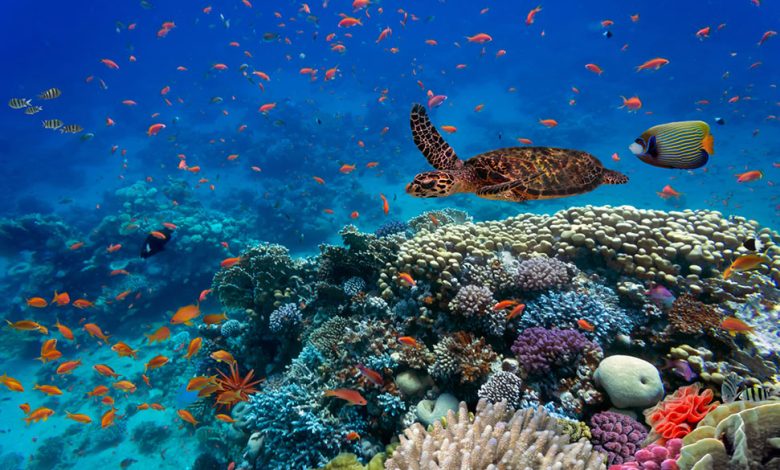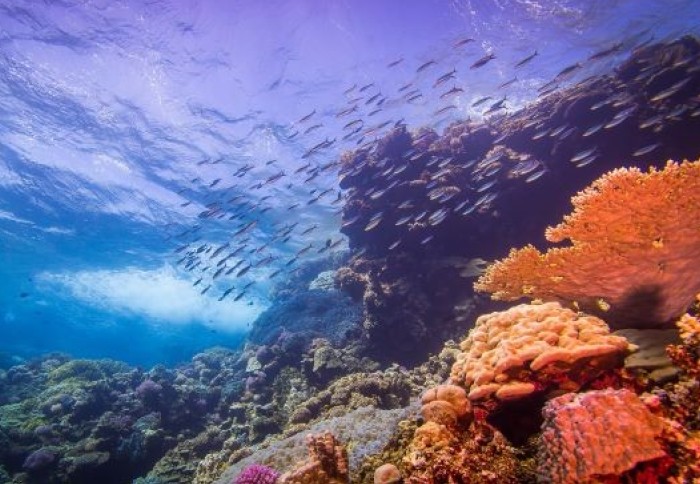50,000 Wild Species Meet Needs Of Billions Worldwide : Experts Offer Options to Ensure Sustainable Use
A new report by the Intergovernmental Science-Policy Platform on Biodiversity and Ecosystem Services (IPBES)

Billions of people, in developed and developing nations, benefit daily from the use of wild species for food, energy, materials, medicine, recreation, inspiration and many other vital contributions to human well-being. The accelerating global biodiversity crisis, with a million species of plants and animals facing extinction, threatens these contributions to people.

A new report by the Intergovernmental Science-Policy Platform on Biodiversity and Ecosystem Services (IPBES) offers insights, analysis and tools to establish more sustainable use of wild species of plants, animals, fungi and algae around the world. Sustainable use is when biodiversity and ecosystem functioning are maintained while contributing to human well-being.
The IPBES Assessment Report on the Sustainable Use of Wild Species is the result of four years of work by 85 leading experts from the natural and social sciences, and holders of indigenous and local knowledge, as well as 200 contributing authors, drawing on more than 6,200 sources. The summary of the Report was approved this week by representatives of the 139 member States of IPBES in Bonn, Germany.
The authors find that illegal trade in wild species represents the third largest class of all illegal trade – with estimated annual values of up to US$199 billion. Timber and fish make up the largest volumes and value of illegal trade in wild species.
“With about 50,000 wild species used through different practices, including more than 10,000 wild species harvested directly for human food, rural people in developing countries are most at risk from unsustainable use, with lack of complementary alternatives often forcing them to further exploit wild species already at risk,” said Dr. Jean-Marc Fromentin (France), who co-chaired the Assessment with Dr. Marla R. Emery (USA/Norway) and Prof. John Donaldson(South Africa).

“70% of the world’s poor are directly dependent on wild species. One in five people rely on wild plants, algae and fungi for their food and income; 2.4 billion rely on fuel wood for cooking and about 90% of the 120 million people working in capture fisheries are supported by small-scale fishing,” said Dr. Emery. “But the regular use of wild species is extremely important not only in the Global South. From the fish that we eat, to medicines, cosmetics, decoration and recreation, wild species’ use is much more prevalent than most people realise.”
The use of wild species is an important source of income for millions of people worldwide. Wild tree species account for two thirds of global industrial roundwood; trade in wild plants, algae and fungi is a billion-dollar industry; and even non-extractive uses of wild species are big business. Tourism, based on observing wild species, is one of the main reasons that, prior to the COVID-19 pandemic, protected areas globally received 8 billion visitors and generated US$600 billion every year.
. In most cases, use of wild species has increased, but sustainability of use has varied, such as in gathering for medicine and logging for materials and energy. Speaking specifically about fishing as an example, Dr. Fromentin said: “Recent global estimates confirm that about 34% of marine wild fish stocks are overfished and 66% are fished within biologically sustainable levels – but within this global picture there are significant local and contextual variations. Countries with robust fisheries management have seen stocks increasing in abundance. The Atlantic bluefin tuna population, for instance, has been rebuilt and is now fished within sustainable levels. For countries and regions with low intensity fisheries management measures, however, the status of stocks is often poorly known, but generally believed to be below the abundance that would maximise sustainable food production. Many small-scale fisheries are unsustainable or only partially sustainable, especially in Africa for both inland and marine fisheries, and in Asia, Latin America and Europe for coastal fisheries.”
“Overexploitation is one of the main threats to the survival of many land-based and aquatic species in the wild”, said Prof. Donaldson. “Addressing the causes of unsustainable use and wherever possible reversing these trends, will result in better outcomes for wild species and the people who depend on them.”
The survival of an estimated 12% of wild tree species is threatened by unsustainable logging; unsustainable gathering is one of the main threats for several plant groups, notably cacti, cycads and orchids, and unsustainable hunting has been identified as a threat for 1,341 wild mammal species – with declines in large-bodied species that have low natural rates of increase also linked to hunting pressure.
The Report finds that without effective regulation across supply chains – from local to global – global trade of wild species generally increases pressures on wild species, leading to unsustainable use and sometimes to wild population collapses (e.g.,shark fin trade).
Illegal use and illegal trade in wild species are also addressed in the Report – as this occurs across all of the practices and often leads to unsustainable use. As part of its analysis, the Report explores policies and tools that have been used in a variety of contexts with regard to the sustainable use of wild species. Seven key elements are presented, that could be used as levers of change to promote sustainable use of wild species-
• Policy options that are inclusive and participatory
• Policy options that recognise and support multiple forms of knowledge
• Policy instruments & tools that ensure fair & equitable distribution of costs & benefits
• Context-specific policies
• Monitoring of wild species and practices
• Policy instruments that are aligned at international, national, regional and local levels;
maintain coherence & consistency with international obligations & take into account
customary rules and norms
• Robust institutions, including customary institutions
The Report finds that policies supporting secure tenure rights and equitable access to land, fisheries and forests, as well as poverty alleviation, create enabling conditions for sustainable use of wild species.
The Report concludes by examining a range of possible future scenarios for the use of wild species, confirming that climate change, increasing demand and technological advances – making many extractive practices more efficient – are likely to present significant challenges.
The writer of this article is Dr. Seema Javed, a known Environmentalist, Journalist and Communications Expert




